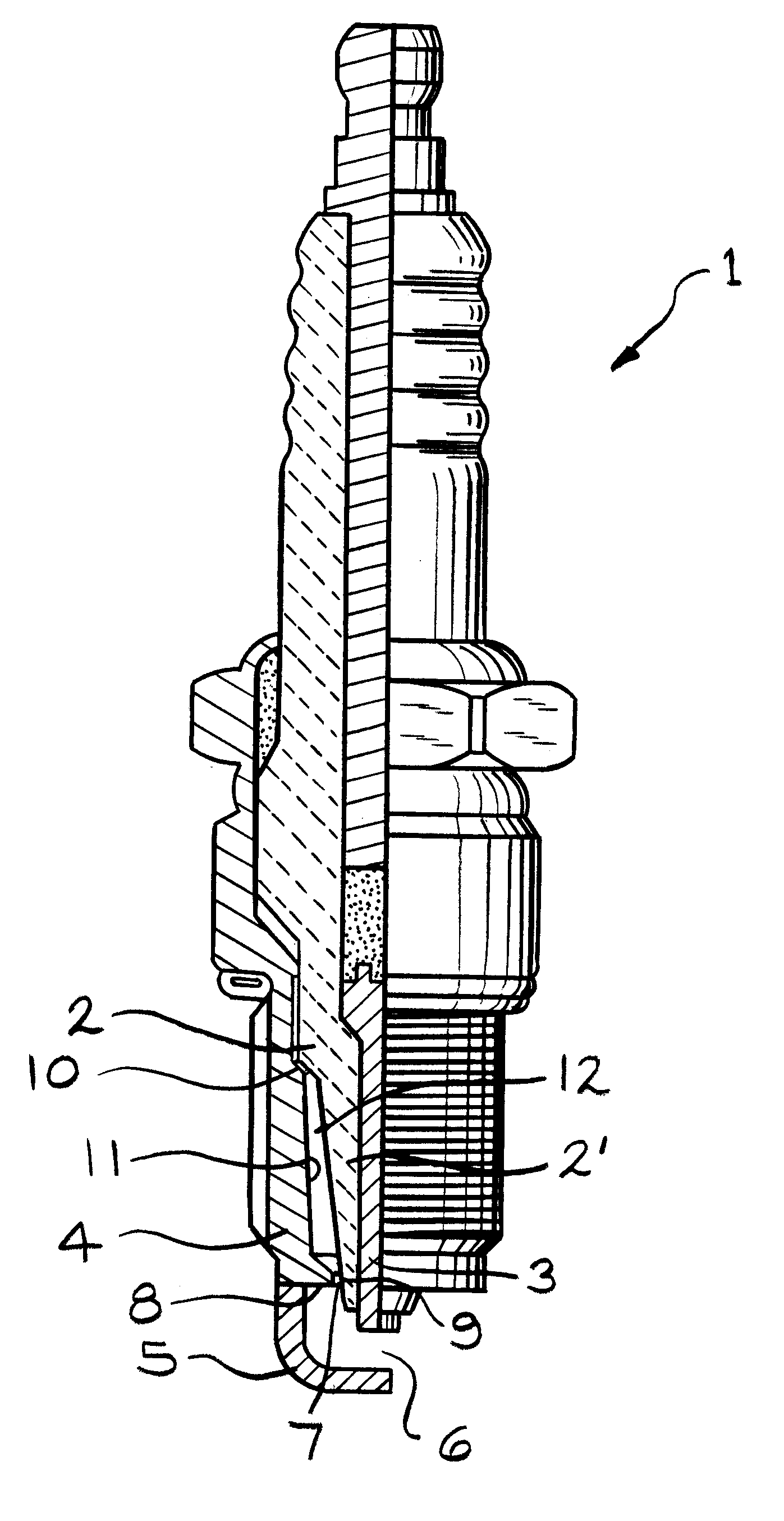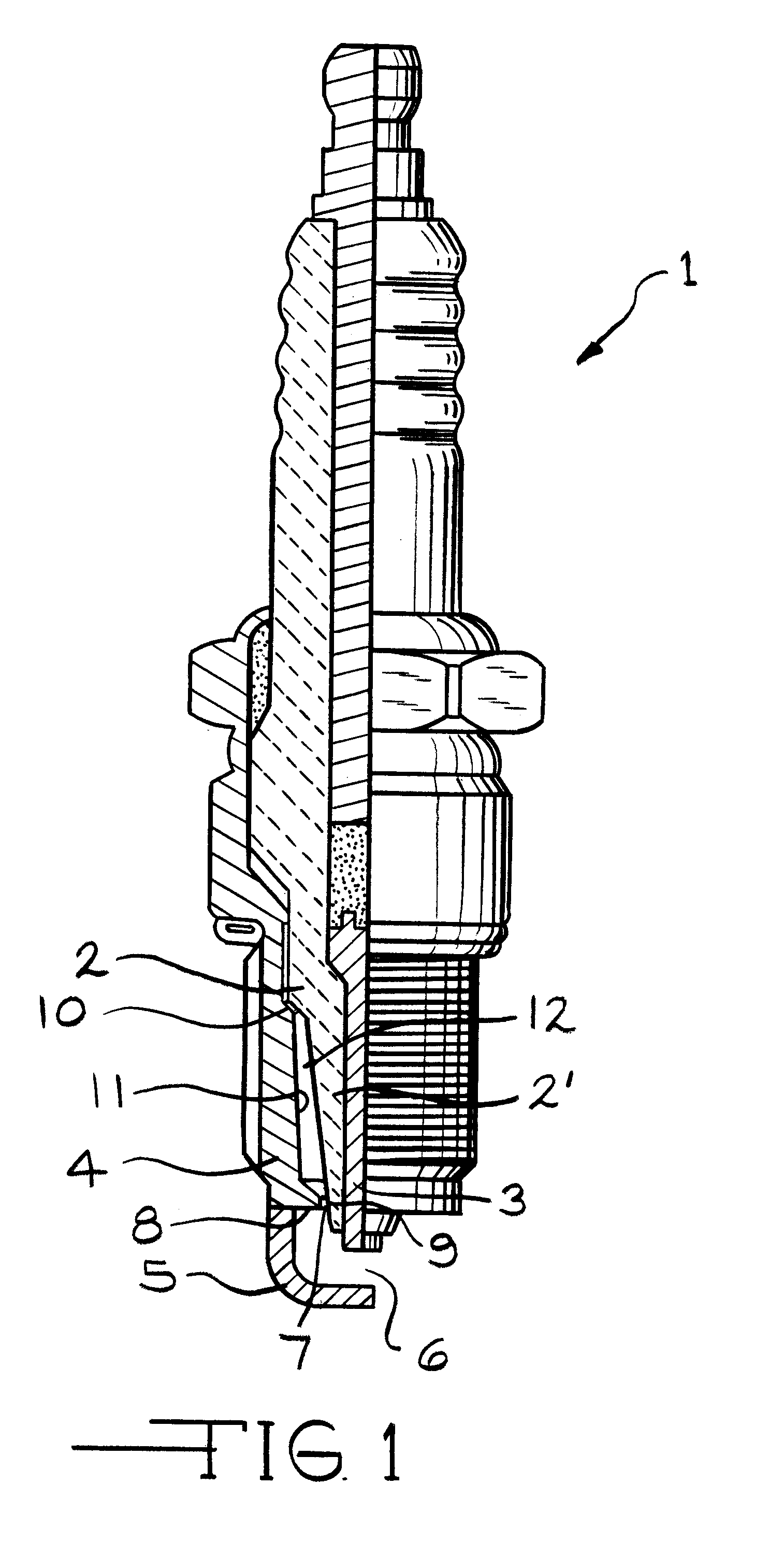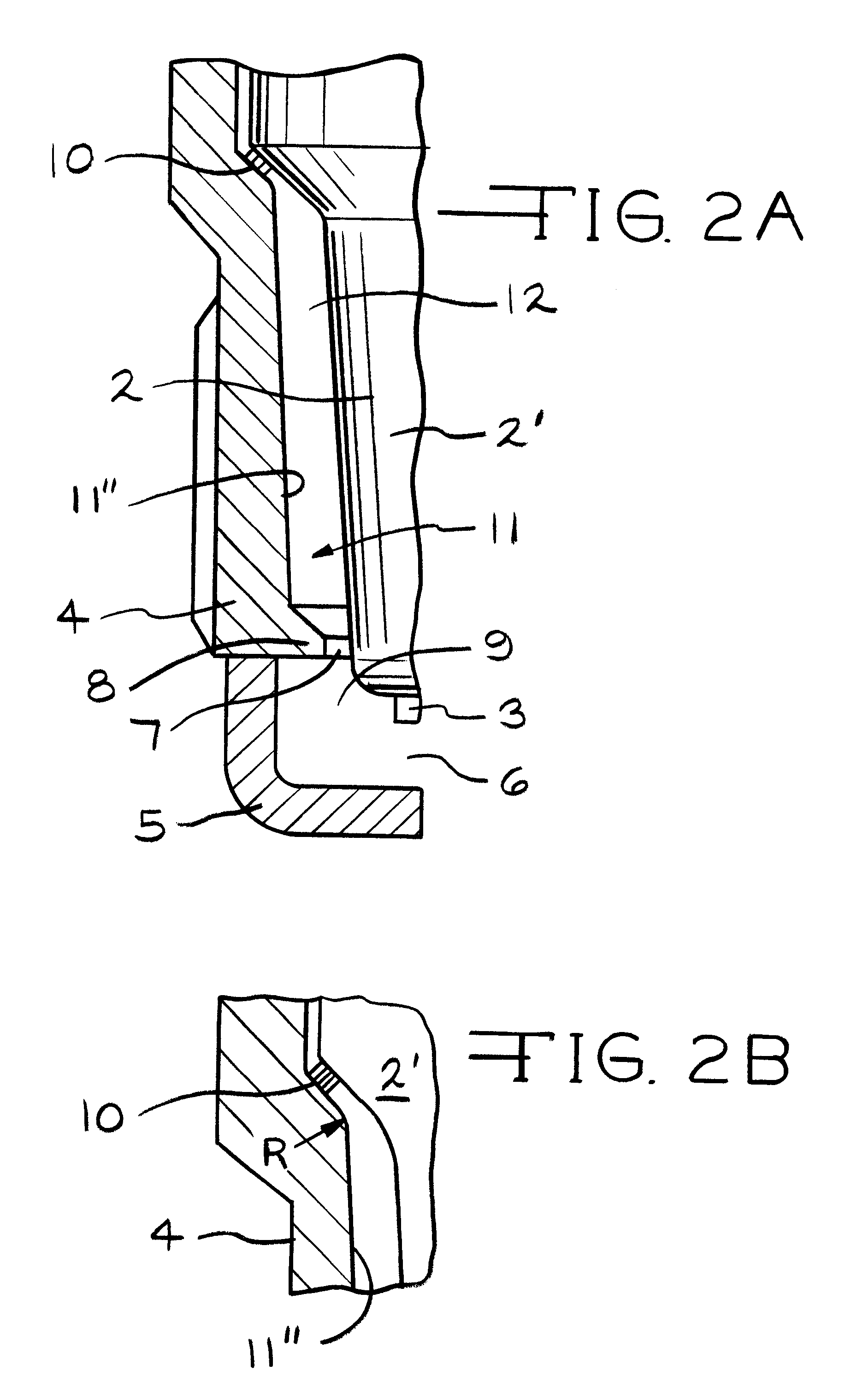Spark plug
- Summary
- Abstract
- Description
- Claims
- Application Information
AI Technical Summary
Benefits of technology
Problems solved by technology
Method used
Image
Examples
Embodiment Construction
The spark plug 1 according to the first embodiment of the present invention was attached to an engine and was tested for contamination resistance and heat resistance. The effect of the invention was verified through comparison of test results with those obtained through use of a conventional spark plug (comparative example) in which the inner wall surface 11 of the metallic shell 4 is perpendicular to the open end portion 7 of the metallic shell 4. A heat resistance test was conducted through use of an 1800 cc, 4-cycle, 4-cylinder, stratified charge combustion engine. Heat resistance was evaluated in terms of the angle of advance at which preignition occurs while ignition timing (BTDC) was varied.
A contamination resistance test was also conducted through use of the same engine. The contamination resistance was evaluated in terms of an insulating resistance between electrodes as measured after 1-hour idling at a speed of 600 rpm, during which the engine is in a stratified charge comb...
PUM
 Login to View More
Login to View More Abstract
Description
Claims
Application Information
 Login to View More
Login to View More - R&D
- Intellectual Property
- Life Sciences
- Materials
- Tech Scout
- Unparalleled Data Quality
- Higher Quality Content
- 60% Fewer Hallucinations
Browse by: Latest US Patents, China's latest patents, Technical Efficacy Thesaurus, Application Domain, Technology Topic, Popular Technical Reports.
© 2025 PatSnap. All rights reserved.Legal|Privacy policy|Modern Slavery Act Transparency Statement|Sitemap|About US| Contact US: help@patsnap.com



